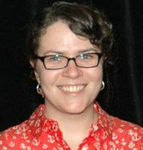

2013 Young Scholars: Nicole Reineker
 Tas
Tas
…Mineral resources account for 90% of GDP at present, and this is not sustainable in the long term as the mineral resources are finite.
In August 2013, I attended the annual Crawford Fund’s parliamentary conference as part of their young scientist scholarship scheme. For the first time the conference was held in Perth Western Australia, to tie in with the annual Africa Down Under conference which focuses on mineral resources. This allowed The Crawford Fund to expand their purview from agricultural development to encompass mining within Africa and to leverage off this large international conference, allowing cross exposure to experts in both the mining and agricultural development industries.
This was the first time a conference with the shared topics of mining, agriculture and development has been undertaken. This is especially important in Africa, as agriculture and mining are two of the main sources of income and land use. It is often rural land that is taken over for large-scale mining developments. Mining companies can have a significant role to play within the development of local and national economies.
This report summarises some of the most interesting and pertinent issues in economic development in relation to agriculture and mining, and how they relate to improvement in the welfare of rural communities within Africa.
In his keynote address, HE Festus Mogae, former president of Botswana and chairman for the Coalition for Dialogue in Africa, discussed how Botswana has utilised mining resources to develop and diversify their resources sector. This approach is considered an example of best practise that can be implemented throughout Africa. The approach included partial state ownership of mines, new requirements for social initiatives, and development of value chains. In Botswana it is the government that makes the promises to the local communities about the benefits that a large-scale mine can bring to the area, while the mining company delivers on these promises, overseen by the government.
Mineral resources account for 90% of GDP at present, and this is not sustainable in the long term as the mineral resources are finite. HE Mogae spoke about long term capacity-building by diversification and retaining much of the value chain within Botswana. This has been achieved by the development of the diamond cutting and polishing industry, and the long term plan to develop Botswana into a world diamond trading centre to rival Antwerp. It has been through the implementation of these policies that they have been able to retain up to 75% of the value of the diamonds within country. Botswana is now sharing their successful experience with resource extraction, though meetings such as Coalition for Dialogue in Africa and the implementation of the Africa Mining Vision signed by the mineral resources ministers.
I had not realised that in order to get large-scale mining developments approved in Africa, there are clauses in these agreements to ensure that the local communities receive some benefits from the mine. These initiatives include the provision of clean water, electricity, health, education and agricultural programmes. This change in policy across Africa has huge potential benefits, but there also needs to be the ability to monitor and enforce these requirements, which is not always possible at present. Dr Hudson Mtegha, University of Witswaterland Johannesburg, spoke about the potential to integrate mineral policy with development policy as regional development policy. He also stressed that there is the need to consider the long term implications, both socially and environmentally, from the exploration stage through to the eventual rehabilitation of the site.
There is an opportunity to develop longer-term agricultural development projects in association with the mining activities, given that mining companies are often in an area longer than aid projects (~25 years compared to ~3). The potential of this is very exciting – leveraging the knowledge and experience of agricultural scientists with development backgrounds with the resources of mining companies. This has the potential to be a “win win” situation for all involved- the mining sector, aid organisations and most importantly the local community.
Legislation is often not enough without on-ground enforcement and evaluation. Our discussion group identified that there has been no large evaluation of the social and agricultural initiatives implemented by mining companies, and whether they had been successful and why. What we suggested was that a large-scale study be undertaken, evaluating the agricultural initiatives to identify the individual factors that influence the success or failure of these projects. With this information, along with consultation with the local communities, in particular the women, it would be possible to provide recommendations about the most effective programs (a guide to best practice). These would include the various options available to best meet the community’s long term needs, under the highly variable local social, environmental and economic situations across Africa.